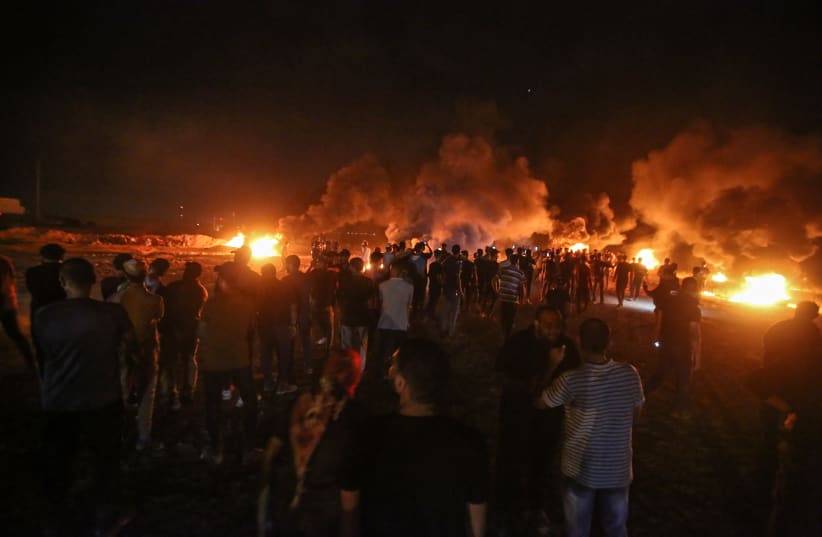A 26-year-old Palestinian man was killed and several others injured as thousands of Gazans clashed along the border fence with Israel on Thursday night.
The Hamas-run Health Ministry announced that Ahmed Mustafa Mahmoud Saleh from the Jabalya refugee camp died after he was shot in the stomach during the riots.
Another 15 Palestinians, including five children, were injured during the riots in which demonstrators hurled explosive devices and burned tires. Troops responded with live fire and tear gas.
Palestinian rioters from so-called “night confusion brigades” have been rioting along the perimeter fence every night for the past week in an attempt to increase pressure on Israel to ease the 14-year blockade on the coastal enclave.
Saleh was the third Palestinian killed during recent protests along the border fence, along with 12-year-old Omar Abu Nil and 36-year-old Hamas operative Osama Duiej.
St.-Sgt. Barel Shmueli, a Border Police sniper was also killed after he was shot in the head at point-blank range by a Hamas operative.
The violence comes despite Israel announcing several moves to ease restrictions placed on the enclave following 11 days of fighting in May, including expanding the fishing zone off the coast of Gaza, increasing Gaza’s water supply by an additional five million cubic meters and allowing more Palestinian merchants to enter the Jewish state.
Israel has also completely opened the Kerem Shalom crossing; increased the allowance of goods and equipment for international civilian projects entering; allowed the import of new vehicles into the Strip and the resumption of the gold trade with the West Bank; and increased the number of Gazan merchants allowed to cross through the Erez crossing.
